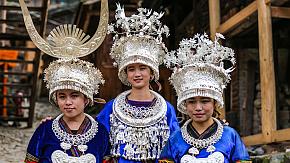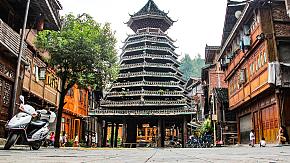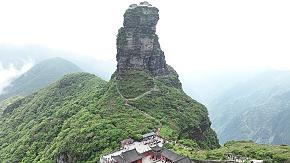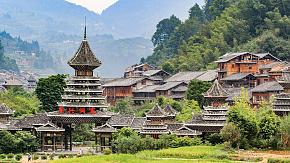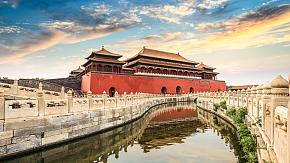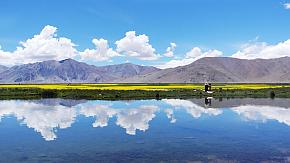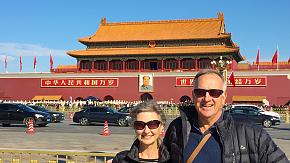Guizhou Ethnic Minorities Guide: Miao, Dong & More Traditions
Guizhou is one of the most diverse provinces in China, with 40 different ethnic groups. Exploring this region is a fantastic way to immerse yourself in Chinese minority culture and see a different side of the country. Read on for an in-depth overview of some of Guizhou's most prominent minority ethnic groups, the best villages to experience local culture, and the top traditions and festivals that will give you an appreciation for these authentic ethnic customs. This guide will help you step outside China's typical tourist cities and have a truly memorable experience.
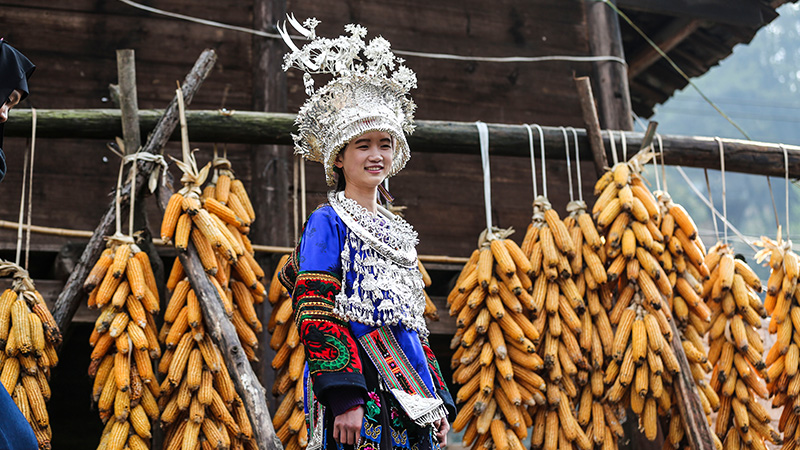 A Miao ethnic girl in Guizhou
A Miao ethnic girl in Guizhou
Miao Ethnic Minority
Famous for their gorgeous silver jewelry, intricate ethnic costumes, and unique cuisine, the Miao people are one of the most fascinating ethnic minorities in Guizhou. Miao cuisine is famously spicy and sour, with top dishes including sour soup fish made with locally sourced fish. These handheld treats are filled with pickled vegetables and accompanied by a numbingly hot dipping sauce.
Miao Festivals
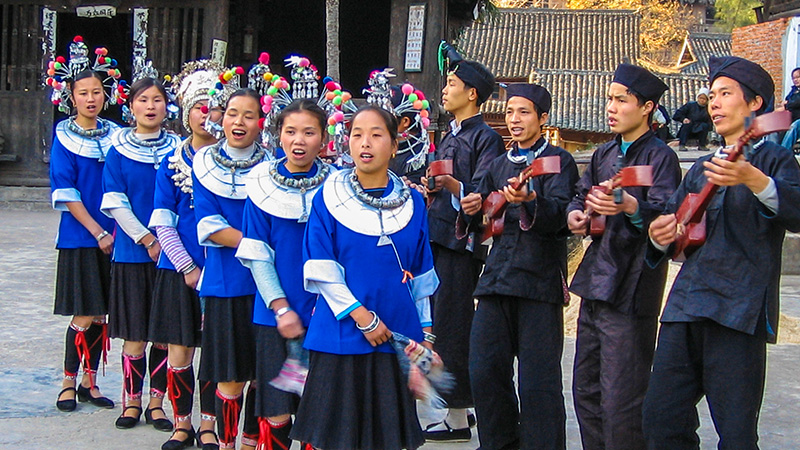 Miao people celebrate their festivals
Miao people celebrate their festivals
Participating in a traditional Miao festival is an excellent way to understand the culture better. These festivals are celebrations of food, music, and dancing, and are bound to be one of the highlights of your visit to the Guizhou region.
Sister's Meal Festival
The Sisters' Meal Festival generally happens in mid-April and runs several days. It's a romance-focused festival where Miao women wear colorful clothing and beautiful silver jewelry as a way to woo potential partners. Expect plenty of singing and dancing, gorgeous costumes, bonfires, and traditional food. One of the key dishes of the Sisters' Meal Festival is "Sisters' Rice", different colored rice, sometimes prepared with hidden items, like chopsticks or garlic inside.
Miao New Year
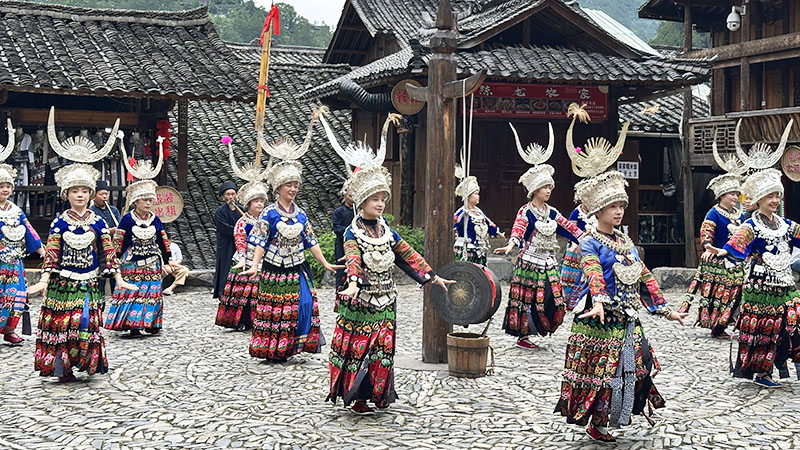 The Miao people performing traditional dance
The Miao people performing traditional dance
Miao New Year falls between late October and mid-November, depending on the lunar calendar, and is one of the most important festivals in the Miao calendar. The Miao people celebrate the harvest and give thanks to their ancestors by holding parades and athletic competitions, as well as performing traditional songs and dances. Huge banquets and parties are common too, so if you're fortunate enough to visit during this time of year, bring your appetite.
Siyueba Festival
Celebrate the Siyueba Festival in early May, honoring King Yalu, regarded as one of the most significant figures in Miao history. This festival heavily focuses on ancestor worship and traditional music and song, including lion dances and drum dances. Visitors might also be treated to fire-walking and athletic competitions.
Top Places to Visit Miao Ethnic
You'll find most Miao people in the Qiandongnan Miao and Dong Autonomous Prefecture of Guizhou, and there are plenty of towns and villages you can visit for an authentic experience. Some, like Xijiang Qianhu Miao Village, are very commercialized, whereas others, like Shiqiao and Langde, are less developed for tourism.
Xijiang Qianhu Miao Village
It costs 90RMB to visit this village. It's the largest Miao settlement in China, and one of the best places to experience Miao culture, so it's worth the trip. It's also more popular than many of the others on our list, so you'll run into other tourists, especially during peak seasons.
Xijiang Qianhu Miao Village is perfect for photography-loving travelers, as it is highly picturesque, with traditional wooden stilt houses and pastoral terraces. At night, the village is especially beautiful, as all of the buildings are lit up. Additionally, you can enjoy regular performances of traditional Miao song and dance, and visit the Xijiang Miao Museum, to learn about Miao culture and life.
Langde Miao Village
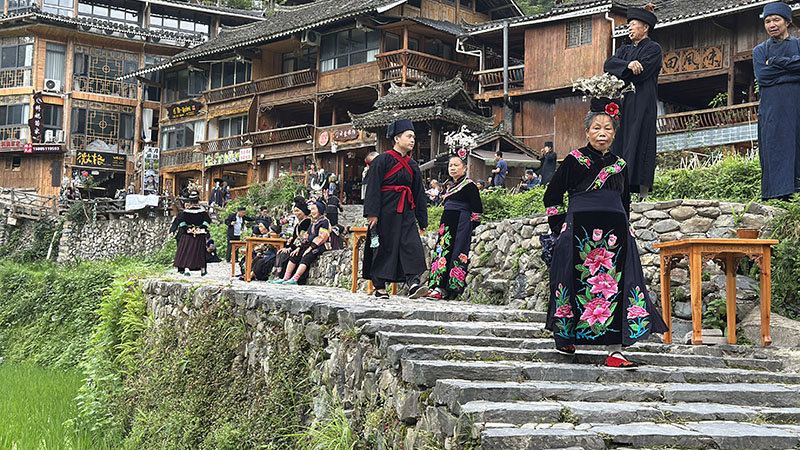 Local people in Langde Miao Village
Local people in Langde Miao Village
The Langde Miao Village is right on the Danjiang River, and is a great place to visit for a more intimate and authentic experience. It costs 50RMB to visit. As with Xijang Qianhu Miao Village, Langde Miao Village has regular song and dance performances and cultural experiences.
Every morning at 11 a.m., Landge Miao Village holds the Block-the-Gate Alcohol ceremony, where villagers dress in traditional attire and welcome guests with Yao rice wine. Visit Drum Tower Square for Miao song and dance performances, performed by local villagers rather than professional actors, for a truly authentic experience. These performances are free.
Visitors can also explore the local museum, stroll through the village, and sample authentic food. Hiking enthusiasts will love the trek from Langde Miao Village to neighboring villages, where you'll have a chance to hike by scenic terraced fields and get a close-up look at daily life.
Zhenyuan Ancient Town
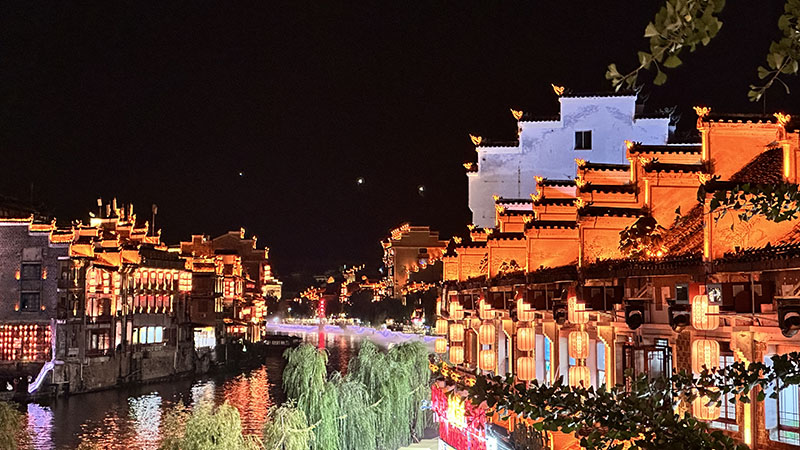 Night view of Zhenyuan Ancient Town
Night view of Zhenyuan Ancient Town
Step back in time in Zhenyuan Ancient Town, located on the Wuyang River. This village is over 2,200 years old, free to visit, and features magnificent natural destinations like Qinglong Cave and Wuyang River Scenic Area, where you can see karst formations and waterfalls.
We highly recommend that travelers spend a night in Zhenyuan Ancient Town and take the river cruise at night to experience the beautiful views. You can also stroll through the town along the ancient stone slab roads, and visit the local museum to learn more about the town's history.
Heritage Villages
Shiqiao and Qingman are two excellent Miao traditional heritage villages. Shiqiao is famous for its paper-making and Chuan Cave. Qingman is a photogenic village known for its embroidery and cuisine, including Miao rice whiskey.
Other Miao villages of note include Matang Gejia Village, which is famous for its traditional batik dyeing, and Daizhai Village, where you can learn about Kala birdcage making. Kongbai Miao Village is well-known for its silver crafting. Each of these villages will give you a new, unique insight into the culture and all of them are free to visit.
Top Experiences in Miao Villages
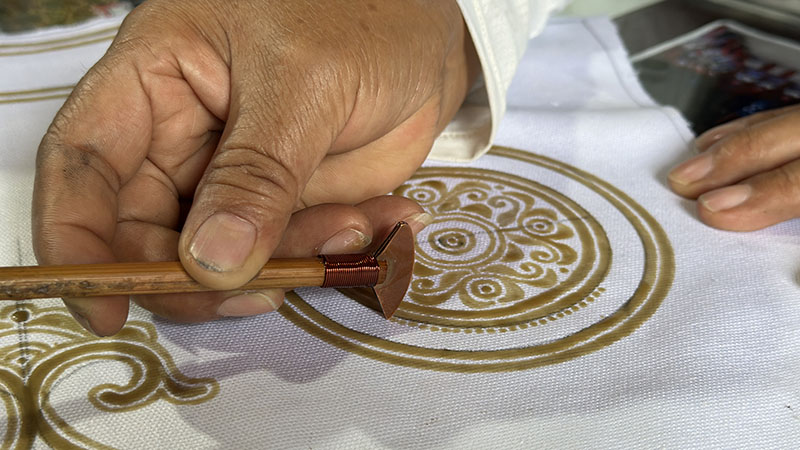 Traditional batik dyeing in Guizhou
Traditional batik dyeing in Guizhou
These are just some of the top experiences you can expect while visiting Miao villages. We're happy to put together a personalized itinerary that directly suits your needs, also.
- Enjoy traditional Miao welcome ceremonies with rice wine, dancing, and folk singing. These ceremonies allow you to interact closely with local villagers and get an immediate feel for Miao culture and hospitality.
- Try hands-on activities like ancient papermaking, traditional batik dyeing, handmade Kala birdcage making, and Miao silver crafting. Many towns offer these experiences, and you can also purchase memorable souvenirs on your visit.
Dong Ethnic Minority
The Dong ethnic minority are most famous for their polyphonic "Grand Song of the Dong", Lusheng dancing, and fantastic food with bold, sour flavors, pickled vegetables and fish, fermented rice wine, and smoked cured pork. Dong architecture is also quite unique, featuring wooden drum towers, stilt houses, and wind-and-rain bridges.
Dong Festivals
Song and dance are prominent in Dong culture, and many of the top festivals highlight this people's long tradition in these arts.
Lusheng Festival
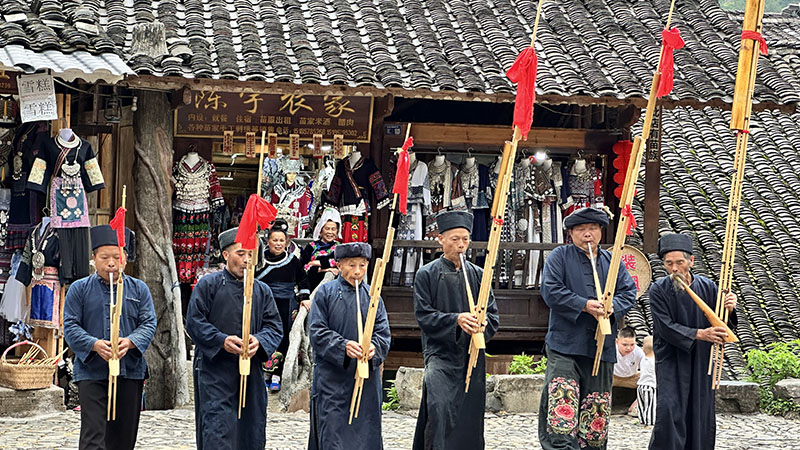 Lusheng performance in Guizhou
Lusheng performance in Guizhou
During February or March, visitors can experience the Lusheng Festival, a music and dance-centric celebration, where Dong people dress in traditional clothing and gather at drum towers or bridges for performances.
San Yue San
San Yue San happens on March 3, and is another festival that focuses heavily on traditional song and dance, specifically aerial bamboo pole dancing. You'll also enjoy some great food during this time, including multi-color glutinous rice.
Bullfighting Festival
Dong bullfighting festivals don't involve a matador. Inside, trained bulls spar with each other in a friendly competition that doesn't result in serious injury. Bullfighting festivals generally occur in February and August, and come with traditional dance and music, as well as the bull competition.
Top Places to Visit Dong Ethnic
Zhaoxing Dong Village
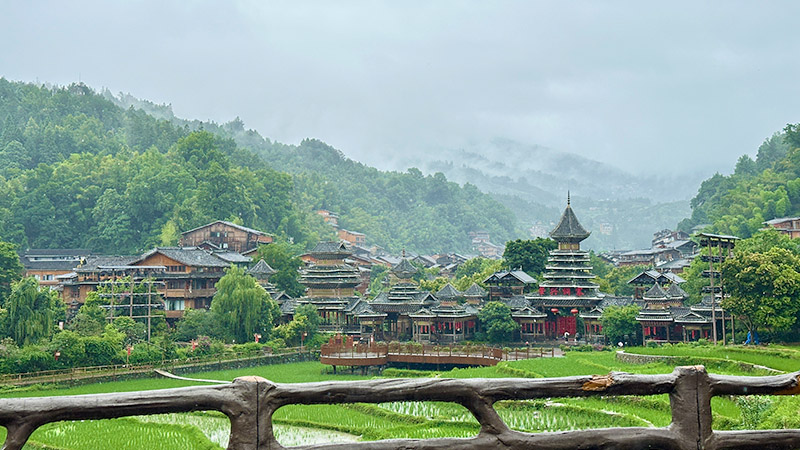 Zhaoxing Dong Village on a foggy day
Zhaoxing Dong Village on a foggy day
Zhaoxing Dong Village is one of the most beautiful places to see Dong architecture and culture. It's known for its multiple drum towers, bridges, and stilt houses all set against a picturesque backdrop of mountains. This village costs 80 RMB to visit, check out our complete guide to Zhaoxing for everything you need to know before you go.
Dali Dong Village
Dali Dong Village is less popular than Zhaoxing Dong Village, so you're less likely to encounter many tourists. Instead, you'll have the ancient stone paths and bridges to yourself. Dali Dong Village is also famous for its nanmu trees, which are of both historical and spiritual importance to the villagers.
There are also several smaller Dong villages near Fanjing Mountain, such as ZhaiSha Dong Village and Yunshe Village. Exploring these villages is a great way to explore the natural beauty of the mountain area and learn about Dong culture at the same time.
Bouyei(Buyi) Ethnic Minority
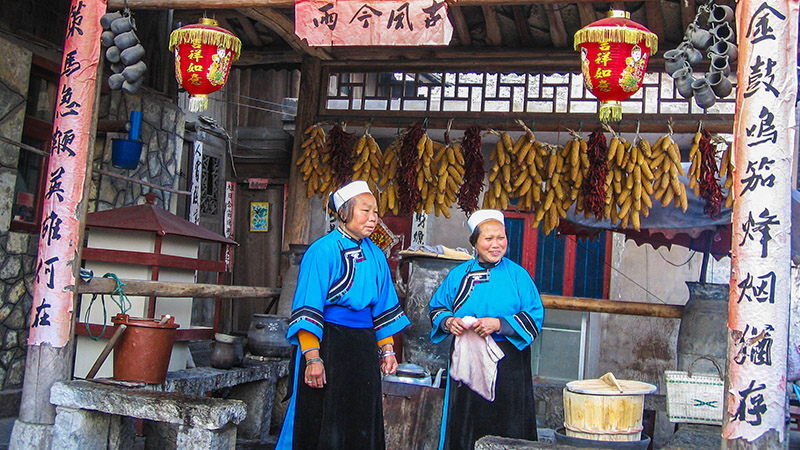 Two Buyi women wearing ethnic costumes
Two Buyi women wearing ethnic costumes
The Bouyei, or Buyi, ethnic minority are famous for traditional embroidery featuring flowers and plants, indigo dyeing, and handcrafted colored glutinous rice. Rice dumplings are an important part of the Bouyei diet, and you can enjoy other delicious traditional dishes like fermented tofu and grilled meat in Bouyei villages.
Bouyei Festivals
Like the Dong and Miao people, the Bouyei culture is full of traditional song and dance, and their festivals reflect their love of these arts.
Zhabai Singing Festival
The Zhabai Singing Festival takes place between June 21 and 23. It's a time to showcase singing talents, often resulting in song battles and performances. Additionally, you'll find plenty of traditional dance and tons of food at this annual festival.
Liuyue Liu Festival
On June 6, the Bouyei celebrate the Liuyune Liu Festival, a harvest festival notable for traditional song and dance, and making multi-colored glutinous rice cakes. Visitors can partake in eating and drinking, and attend performances, bonfires, and banquets.
Top Places to Visit Buyi Ethnic
Huangguoshu Waterfall
Huangguoshu Waterfall is located in the Bouyei region of Anshun and is an excellent place to experience Bouyei culture. This impressive waterfall is comprised of 18 distinct cascades and natural features, including karst caves.
Wanfenglin Scenic Area
Located in Xingyi, the Wanfenglin Scenic Area is a fantastic karst landscape with small Bouyei villages all throughout it. Visitors can hike or take a sightseeing bus between the villages and enjoy phenomenal nature and culture all in one go.
Nanlong Ancient Village
If you're interested in Bouyei embroidery and local crafts, a visit to Nanlong Ancient Village is certainly in order. You can pick up wonderful souvenirs here, and see rare banyan trees and traditional stilt houses.
Experience the Culture of Guizhou's Ethnic Minorities
Visiting Miao, Dong, and Bouyei villages will give you a fresh insight into Chinese culture and a new appreciation for the country. We can help craft an itinerary that allows you to get an authentic peek into the traditions of these ethnic minorities. Email us at trip@odynovotours.com or visit our contact page to get started.
Related Posts You May Like
What Our Clients Say
"Great Customized Service", "Trip of A Lifetime", "Exceed All Expectations"
